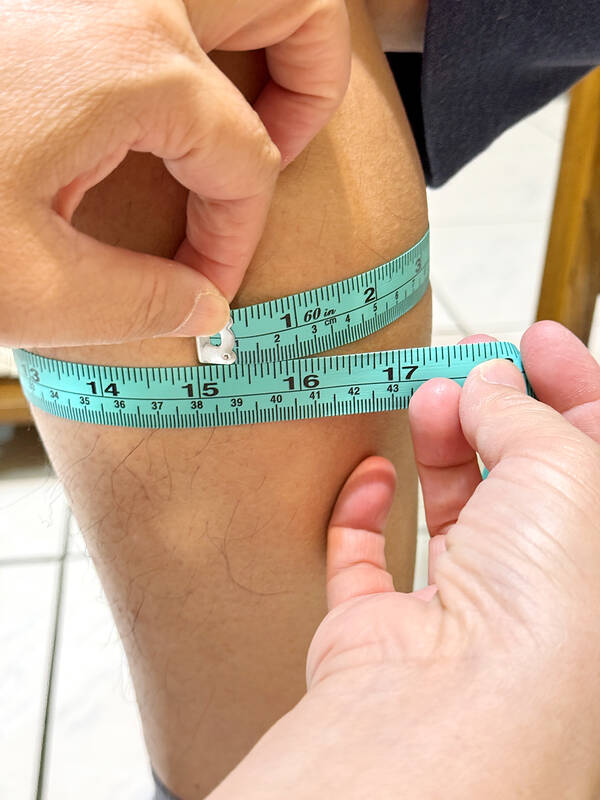-
By Yang Mien-chieh and William Hetherington / Staff reporter, with staff writer
Those older than 40 years old should make sure they get a sufficient amount of exercise, food and sun exposure to avoid sarcopenia, a medical researcher said on Sunday.
After the age of 40, muscle mass begins to decline, which can lead to sarcopenia — a loss of muscle mass, strength and function — which raises the risk of falls and fractures, National Taipei University of Nursing and Health Sciences assistant professor Wang Hsiao-ping (王曉萍) said.
Sarcopenia is a common but often overlooked problem among older adults, particularly when combined with poor nutrition and lack of physical activity, which can accelerate loss of mobility and independence, she said.

Photo courtesy of Wang Hsiao-ping
Wang said the condition typically appears in people older than 60, but might develop earlier among those with chronic diseases or sedentary lifestyles.
Many with sarcopenia might not even know they have the condition, but a simple way to check for it is to form a circle around the thickest part of your calf using the thumbs and index fingers of your two hands, she said.
“If there is a gap between your fingers and your leg, it could indicate possible sarcopenia,” Wang said.
Another method is to sit with your knees bent at a 90° angle and measure around the thickest part of your calf using soft tape, she said.
Men with a circumference smaller than 34cm and women with less than 33cm are in a high-risk group, Wang said.
Exercise is the best way to delay muscle loss, she said, recommending that people do resistance training, such as squats, elastic band exercises or weight training two to three times per week.
This should be complemented by 150 minutes of moderate aerobic activity weekly, such as brisk walking, swimming or cycling, to improve cardiovascular health, Wang said, adding that balance exercises such as taichi and yoga can also reduce the risk of falling and help seniors stay mobile.
“Diet plays an equally important role. For those without medical restrictions, protein intake should reach 1.2g to 1.5g per kilogram of body weight per day, evenly distributed across three meals,” she said, citing fish, chicken, eggs, soy products and dairy as good sources of protein.
Vitamin D and calcium are also key to maintaining strong bones and muscles, and can be obtained from foods such as fish, eggs, tofu and milk, Wang said.
Omega-3 fatty acids from salmon and nuts help reduce inflammation and support muscle function, she added.
Wang cautioned against diets consisting only of starch or vegetables, as it could lead to malnutrition and muscle loss.
“Sunlight exposure also helps strengthen bones. Sunlight enables the body to produce vitamin D, which boosts immunity, supports bone health and improves sleep quality,” she said.
However, people should avoid the intense midday sun and instead expose their arms and legs to sunlight for 15 to 30 minutes before 10am or after 4pm, while taking appropriate skin protection measures, she added.